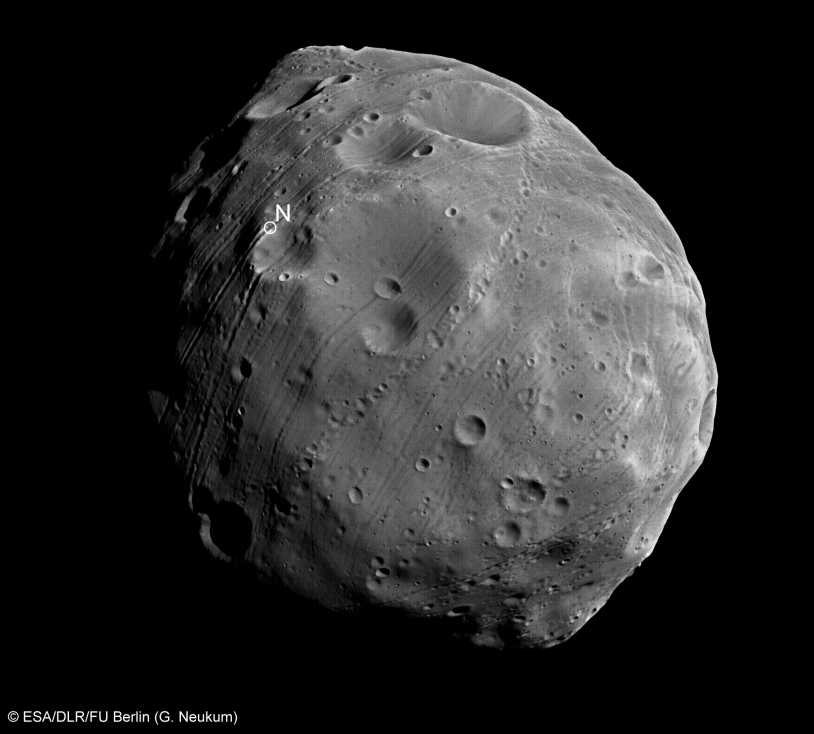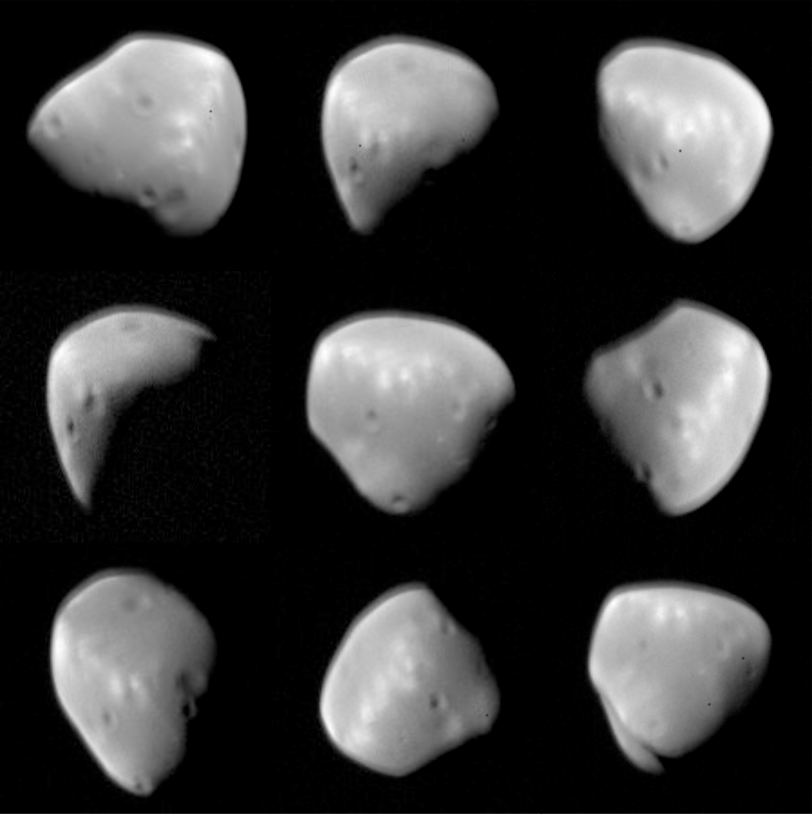Mission
Science goals
The Martian Moons eXploration (MMX) mission is pursuing two science goals:
- Determine the origin of Mars’ moons and the process governing the formation of planets in the solar system.
- Detail the processes behind the evolution of the Mars system (Mars, Phobos and Deimos).
The small moons Phobos and Deimos could be asteroids that were captured by Mars’ gravity field after slowly drifting away from the main asteroid belt. If so, they would be veritable time capsules preserving the secrets of how water appeared on the telluric planets of the solar system. Alternatively, the moons could be the result of a giant collision with the young planet Mars, composed of coalesced fragments of the impacting object. By studying these small bodies up close and bringing back samples, the mission will attempt to establish which of these hypotheses is correct.
Returning more than 10 grams of material from Phobos—a record of the Mars system’s history—will also mark a major technological milestone, both for the extraction technique and the mission profile, paving the way for potential crewed missions to Phobos and Deimos. To this end, the robotic probe will measure radiation in the Martian environment throughout the mission, as this could prove a big obstacle to future exploration.

Phobos, the largest of Mars’ two moons. ‘N’ marks the North Pole.
Credits: ESA/DLR/FU Berlin, CC BY-SA IGO 3.0
Mission
The MMX mission will depart from the Tanegashima launch base in Japan in August 2026 atop an H-3 launcher. With ExoMars and Trace Gas Orbiter (TGO), it will be only the second mission of over three tonnes sent to Mars. The journey will last almost one year, after which it is scheduled to enter Mars orbit in July 2027. The probe will be powered by a propulsion module that will be jettisoned before the start of science operations.
MMX will spend three years inside the Mars system. It will first study Phobos, its main target, starting with observations from quasi-orbit of the largest of Mars’ two moons (mean radius 23 km) and investigation of its surface by a suite of instruments. Concurrently with this phase, the MMX science team will choose one or two suitable landing zones for the probe to collect samples—the mission’s core goal. During one of the rehearsals for this manoeuvre, descending to about 100 metres from the surface, the small French-German rover will be released and begin its planned 100-day mission on Phobos.
While sample collection will benefit from lessons learned from Japan’s two Hayabusa asteroid missions, MMX will use a different technique. The probe aims to set down for one hour and scoop up at least 10 grams of material from about two centimetres below the surface before taking off and returning to orbit. This will be one of the last science operations before departing for Mars’ other moon, Deimos.

The small moon Deimos, viewed by the European Mars Express satellite.
Credits: ESA/DLR/FU Berlin, CC BY-SA IGO 3.0
The MMX probe will observe Deimos (mean radius 12 km) remotely with a series of flybys to precisely study its surface composition and determine how it formed. It will not land, remaining at a safe distance until July 2030, when its return module will fire its engine and separate for the return trip to Earth, where it will arrive in June 2031 and release the sample capsule designed specially to withstand atmospheric re-entry. The capsule will land in the Australian desert, from where it will be transported to Sagamihara, Japan, to study the first samples from the Mars system.
